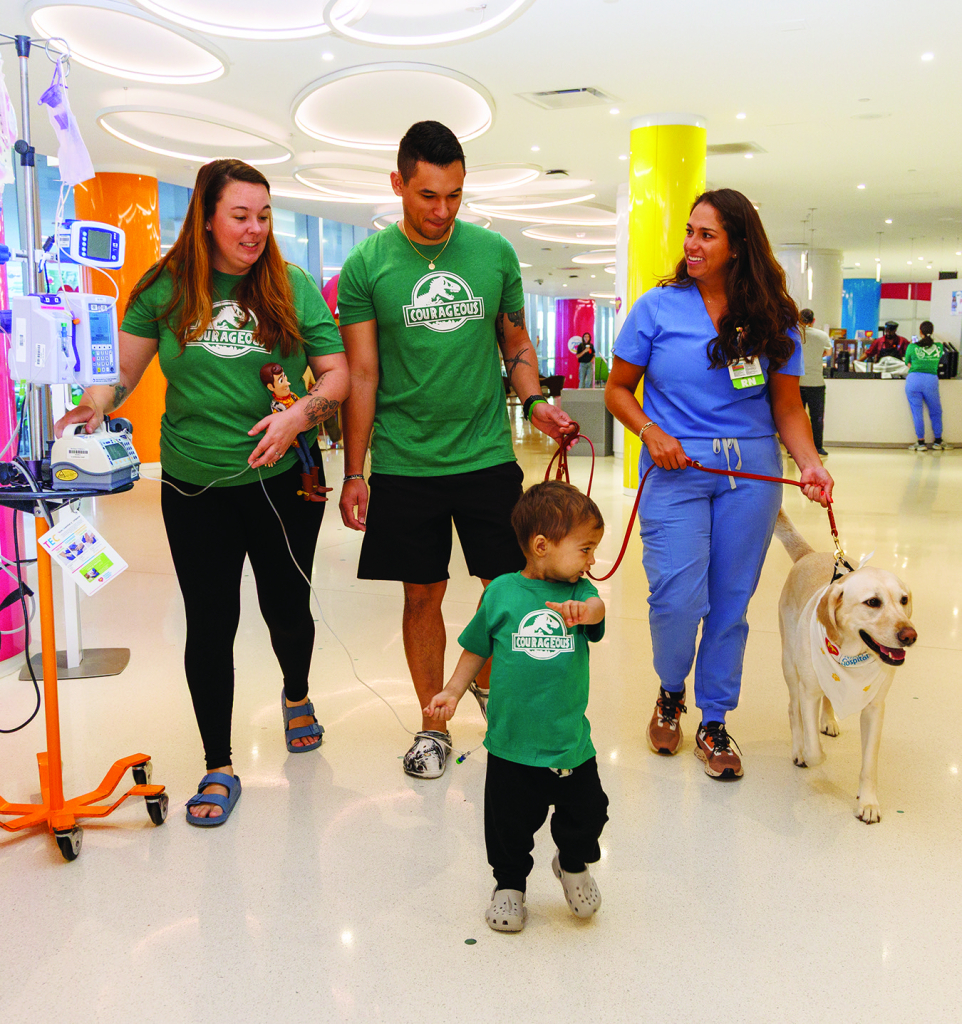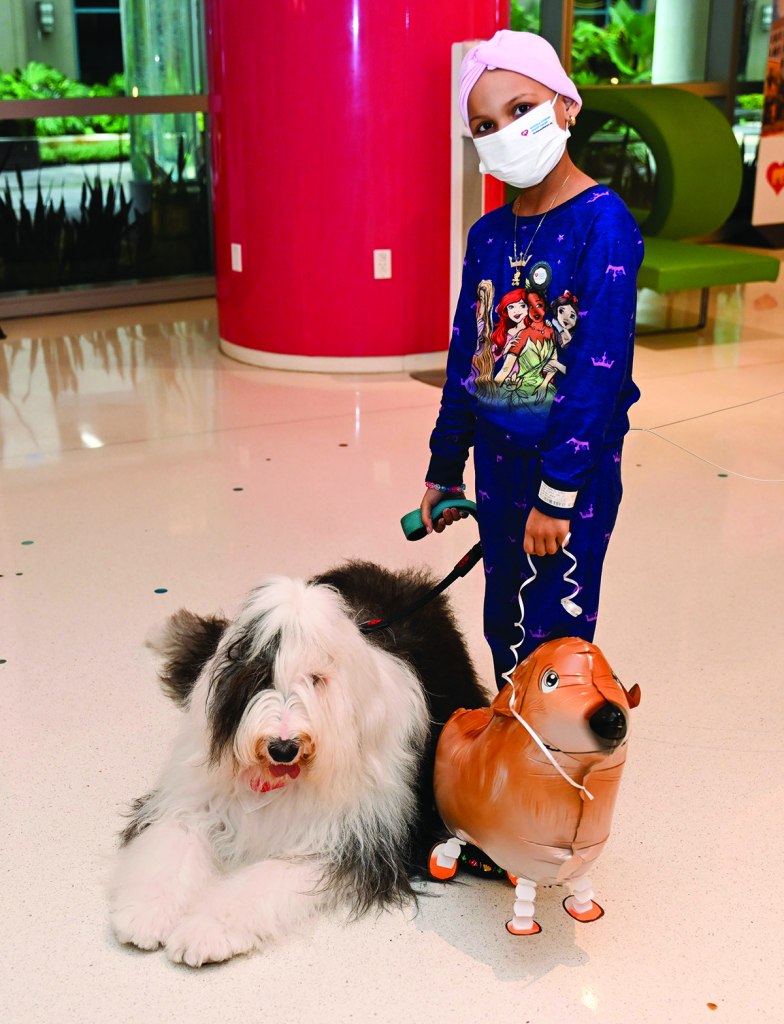Professional Pooches
The Working Dogs Of Coral Gables Are A Noble Breed – With A Purpose
The lives of most dogs in Coral Gables are quite simple. Eat. Play. Sleep. Sleep some more. Repeat. It’s hard not to envy these routines. But this isn’t the case for every dog. Some have to “clock in” and go to work, although they probably don’t think of it that way. Indeed, from Terriers to Sheepdogs, many canines are bred to serve, and in service find fulfillment. Here’s a look into some of the jobs that dogs have in the City Beautiful.
Coral Gables Police Department
The moment that Coral Gables Police Officer Stephanie LaRicci puts on her duty belt before leaving her house in the morning, Willy – her three-year-old Belgian Malinois shepherd – knows it’s also time for work.
Willy has spent the last year-and-a-half at LaRicci’s side, serving full-time as part of the Coral Gables Police K-9 Unit. He’s skilled at apprehending suspects and detecting the presence of bombs and explosives.
It’s not by chance that Willy became a police dog. Like all other canines with the Coral Gables Police Department (CGPD), he was born to be one. “These dogs are genetically built and bred to do police and military work,” says LaRicci. “They have an extra bit of courage. They’re not going to stop. They have a really strong drive. If they get a hard correction in training, it’s not going to discourage them at all.”

Originally from Hungary, Willy was selected by the CGPD when he was a year old, and, after grading well in various exercises, he and LaRicci then underwent a 470-hour training course together to receive their state certification. During this intense program, Willy was taught focus, obedience, and a series of different commands (which are given to him mostly in Dutch, as well as German, French, Czech, and English).
After learning the many commands – and the correct biting technique – Willie was instructed in how to detect human orders and how to react appropriately. The Belgian Malinois has an incredible sense of smell, with a nose that contains 220 million scent receptors. Humans, by comparison, only have five million. This means that Willy can make out even the faintest human scents, such as adrenaline and cortisol, which the body releases under stressful situations.
A misconception that people have about police dogs is that they bite everybody. This couldn’t be further from the truth, LaRicci says. “Our department specifically sends the dogs for violent felonies, so they’re not going for people that stole a book bag from a store that was $20,” she says. “It’s going to be a violent crime where [there was a victim].”
When a dog apprehends a suspect, LaRicci must then file a lengthy police report. In some cases, there could be a lawsuit that follows. Because of these risks, LaRicci and Willie must be in sync every time they’re called to action. This requires strict discipline from both of them, formed through the strong bonds they’ve developed at and away from work. “The handlers know the dogs like they know themselves,” says LaRicci.
LaRicci has been around dogs most of her life. In addition to her family dogs, her father – who is a sergeant with the Pinecrest Police Department – introduced her to police dogs at a young age. She was accepted into the coveted canine unit of the CGPD after just a few years with the department. To receive approval, she had to have superb policing stats and a history of not using excessive force.
Willy will continue working with LaRicci until he retires. When that time arrives, he’ll become a full-time house dog with LaRicci and spend his golden years doing other things that he loves, like chasing birds, digging up sand on the beach, and splashing around in the pool. “He enjoys home just as much as he likes it here,” says his handler.
Nicklaus Children’s Hospital
Ranked as one of the top children’s hospitals in the United States in various categories of expertise, Nicklaus features 40 pediatric specialties that create a sanctuary “where your child matters most,” according to the hospital’s website. In addition to its many medical services, Nicklaus also has a pet therapy program. This nine-dog coalition offers unconditional love and support to both patients and volunteers.


Left: Santa Paws At The Hospital’s Christmas Party
Right: Nurse Bianca Lazo Walks Nala With A Young Patient
The emotional and psychological benefits provided by canines has long been known. Reinforcing that belief, the Journal of the American Medical Association published a peer-reviewed study in March 2025 confirming the obvious – that dogs decrease anxiety levels in pediatric patients.
Nicklaus Children’s Experiences Manager Jenny Oquendo sees the benefits firsthand. “Getting a child to have something to look forward to later in the day, helping to cheer them up, bringing some hope in a season where they might not be hopeful – those are all benefits of having a pet therapy dog visit them at the bedside,” says Oquendo. “I think, for our volunteers, it does something similar.”

One of the nine dogs within Nicklaus’ pet therapy program is Zeus, a Chow Chow who, at 10 years of age, is the oldest of the bunch. Other pooches include a chihuahua named Lucy, a Bernese Mountain Dog named Apollo, an Old English Sheepdog named Thor, a Bernadoodle named Beau, and a Labrador retriever named Nala. Nicklaus once even had a Great Dane.
A dog becomes eligible to be certified as a therapy pet once they turn one year old. The certification process, which is first completed through the Alliance of Therapy Dogs, is thorough. Each dog must pass an assortment of behavioral assessments. Volunteers who handle the dogs must also get approved by this same organization, which is required before they submit their documentation to become a volunteer at Nicklaus.
The dogs start their days at the Michael Fux Family Center. From there, pet therapy requests are carefully reviewed. These requests, which can be submitted by a physician, a clinician, or a hospital staff member, include the patient’s name, room number, and any precautions that must be taken to prevent any possible worsening of a child’s health. There are, however, some exceptions that are made.

“Sometimes, the child’s emotional wellbeing weighs into whether or not we allow them to get a visit from the dog,” Oquendo said. “Maybe that child is not doing well, maybe they’re in the PICU [pediatric intensive care unit], maybe the outcome might not be what we would aspire for, but if they wish to see a dog, we can get the green light from the physicians who would really consider that emotional well-being in the full equation.”
To enhance the overall experience, each visit from a dog includes a complimentary trading card, consisting of the dog’s name, breed, favorite food, and a couple of fun facts (who knew that Thor the Sheepdog could skateboard!) and photos. For patients who want to connect with their canine companions outside of the in-person visits, they can download the My Nicklaus Children’s app and play with virtual versions of each dog.
Belmont Village Senior Living
Scampi, a four-year-old Australian Terrier, and Luna, a three-year old Havanese, reflect the personalities of their owners to a tee. Patti is full of energy and somehow able to keep up with the always-scampering Scampi. Luna, on the other hand, has a much more laid-back demeanor – perfect for her equally laid-back owner, Rafa.

Scampi and Luna are two of five resident dogs that stay with their owners at Belmont Village Senior Living, the dog-friendly facility located right next to the Shops at Merrick Park. What Patti, 76, and Rafa, 81, appreciate the most about their pet pooches is their unconditional love. “It doesn’t matter if you’re a bad person or if you’re ugly,” says Patti. “No matter what, they still love you; it’s wonderful.” There are plenty of activities for residents to engage in with their dog. Rafa, who recently moved into Belmont Village, loves to walk with Luna throughout Merrick Park. Patty prefers to take Scampi to the beautiful outdoor terrace on the second floor of the building. Belmont also has a designated dog park that features grass turf and umbrellas. Once the summer heat cools down, Belmont Village plans on bringing back “Yappy Hour” – a happy hour event with a doggy-themed twist.
“At about an hour before dinner time… residents gather, and we chill, we talk, we hang out,” says Anna Moreno-Nava, the activities director at Belmont Village. “The dogs play together, and residents who don’t have dogs can come and get love from these dogs. They pet them and play with them.”
Another excellent resource for dog owners at Belmont Village is Woof Gang Bakery & Grooming, a pet grooming and doggie- treat company located adjacent to the senior living facility. Woof Gang even offers a service that will pick up an owner’s dog at their apartment and drop the pet back off once their service is completed.

Patti With Scampi, A Four-Year-Old Australian Terrier, And Rafa With Luna, A Three-Year-Old Havanese
For those needing a bit more care, Belmont Village arranges therapy dogs to visit Memory Care residents on a regular basis. Something as simple as a pet can lead to massive benefits. “Even just that one interaction … lowers your blood pressure,” Moreno-Nava says. “It calms your mood. It also makes you just forget everything for a second. It regroups; it rewires the brain – that smile, that contact with the dog.”
Belmont Village plans on continuing to introduce dog-friendly activities to its residents in the future.


